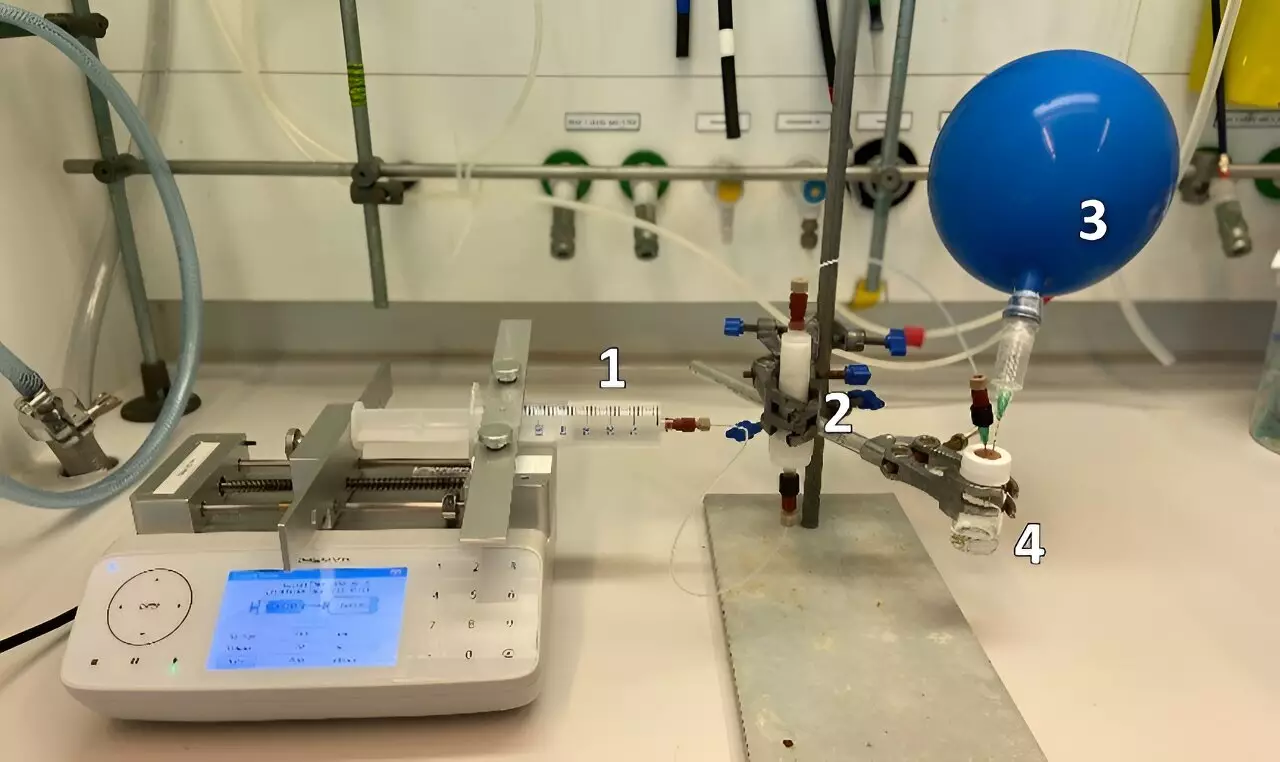Chemists at the University of Amsterdam have made significant strides in developing a novel method for introducing a trifluoromethyl group to molecules, particularly at sulfur, nitrogen, or oxygen atoms. This groundbreaking procedure, detailed in Science, eliminates the need for PFAS reagents, thus establishing a more environmentally friendly pathway for the synthesis of crucial pharmaceutical and agrochemical compounds.
Flow Chemistry Advancements
The research, conducted by the Flow Chemistry group at the Van ‘t Hoff Institute for Molecular Sciences under the leadership of Prof. Timothy Noël, marks a shift towards utilizing flow chemistry principles for enhanced safety and control in chemical reactions. This innovative approach not only ensures a more sustainable synthesis route but also offers greater flexibility and versatility compared to traditional methods involving chemical glassware.
The significance of this new synthesis protocol lies in its ability to reduce the reliance on PFAS compounds, which are facing increasing scrutiny due to environmental concerns. The method only necessitates the use of cesium fluoride salt as the fluorine source, paving the way for a more environmentally friendly option in pharmaceutical compound synthesis. The involvement of researchers from AstraZeneca further underscores the industry’s interest in pursuing sustainable solutions.
The introduction of a trifluoromethyl group to drug molecules and agrochemicals offers a range of benefits, including improved hydrophobicity, metabolic stability, and efficacy. By enabling the coupling of the CF3 group through sulfur, nitrogen, or oxygen atoms, the new synthesis protocol enhances the properties of these compounds, influencing factors such as lipophilicity, oxidation resistance, and acid-base properties.
Central to the methodology is the development of a versatile microfluidic flow module that generates reactive N–, S–, and O–CF3 anions. These anions are prepared within a packed bed flow reactor containing cesium fluoride salt, allowing for high-efficiency fluorination of appropriate precursors. The integration of an anion generating module with a downstream reaction module streamlines the derivatization process and ensures all intermediates remain contained within the microfluidic system, enhancing safety and efficiency.
The integration of various anions with different substrates in the research demonstrates the potential for generating multiple fluorinated products relevant to pharmaceutical and agrochemical synthesis. With promising operational parameters that align with academic and industrial requirements, this innovative approach is poised to revolutionize the development of new pharmaceutical drugs by enhancing their properties and promoting sustainability in production processes.

